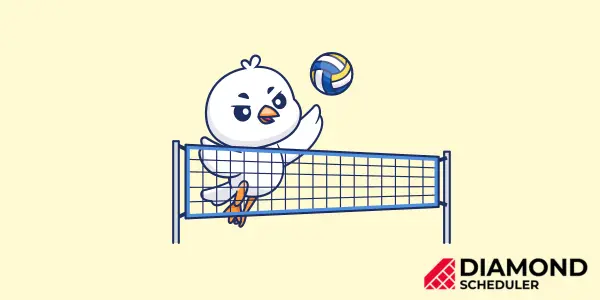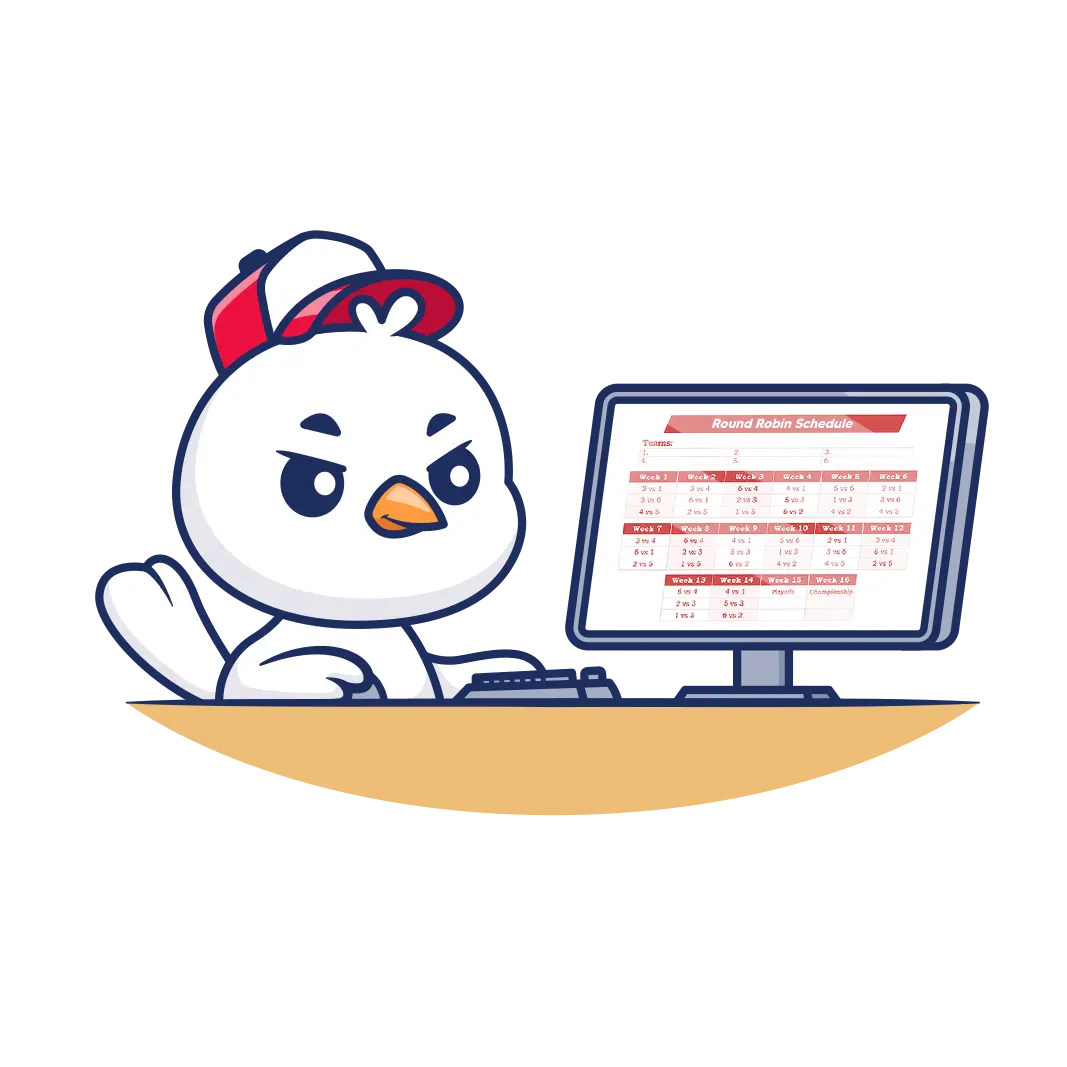
What's a Jump Serve? An Extensive Guide to Volleyball Terms
Have you ever found yourself watching a thrilling volleyball game, completely immersed in the action from your side of the court, yet feeling somewhat lost due to unfamiliar terms flying around?
You can identify each volleyball player but don't know the difference between a knuckleball, a row attack, and a third hit? Like no other sport, volleyball can be enjoyed in different seasonal tournaments - indoor or beach- throughout the year. Understanding volleyball terms is the key to fully enjoying and appreciating a volleyball game.
Whether your team wins or the other team defeats them, you'll enjoy the game more because you understand the terms.

The basics of volleyball: A solid foundation
Volleyball, a captivating team sport, revolves around the objective of sending the ball over the net and into the opposing team's court while ensuring that they cannot do the same. To achieve this goal, on the court, each team fields six players with specific roles that contribute to the team's success.
The rules of volleyball are relatively straightforward but demand precision and teamwork. The game starts with a serve from the serving team, aiming to initiate the rally. Once the player hits the ball, teams have a maximum of three hits (excluding blocks) to return the ball to the opposing side.
The objective is to score points by successfully landing the ball on the attacking team's floor or forcing them into an error.
Who are the players?
Setters: Considered the quarterbacks of the team, setters play a vital role in organizing the offense by delivering precise passes for attackers to spike or hit.
Hitters: Also known as attackers, hitters are responsible for executing powerful attacks and strategically placing the ball on the opponent's court.
Blockers: These players position themselves at the net to prevent the opposing team's attacks and create defensive barriers.
Defensive specialists (Liberos): Liberos are specialized defensive players, known for their exceptional digging and receiving skills, who can replace back-row players without counting as a substitution.
Serving terms: Initiating the game
Jump serve - the power move
The jump serve is a breathtaking display of power and technique, combining a running approach, a high toss, and an explosive jump into the serve. This type of serve generates immense speed and spin on the ball, making it incredibly challenging for the receiving team to handle.
The key to mastering the jump serve lies in consistent practice and understanding the mechanics behind it. Players must learn to toss the ball in the correct position, align their bodies for an effective jump, and strike the ball with clean contact.
Rapidly hit ball - the fierce serve
The rapidly hit ball, often referred to as the "bullet serve," is a high-velocity serve designed to catch the receiving team off guard. Instead of a traditional toss and approach, the server quickly strikes the ball with a compact motion, sending it flying over the net with lightning speed.
The rapidly hit ball is a serve that aims to surprise the opposing team with its speed and accuracy. By foregoing a full toss and approach, the server can catch the opponents off balance, limiting their response time and increasing the chances of an ace or an overpass.
Service error - risk and reward
In volleyball, serving errors occur when the serving team fails to deliver the ball correctly over the net or when the ball lands out of bounds in the opponent's court.
A service error results in an immediate point for the other team, emphasizing the boundary lines between a well-executed serve and an unsuccessful attempt.

Attacking and hitting terms: Decoding the offensive play
The heart-pounding actions of Volleyball often revolve around attacking and hitting, where players unleash powerful strikes to outmaneuver the opposition's defense and score points.
Spiked ball - an unstoppable force
The spiked ball, also known as a "spike" or a "kill," is one of the most exhilarating moves in volleyball. Executed by the attacking team's hitter, it involves a player leaping high into the air and driving the ball downward with incredible force, aiming to land it on the opponent's floor.
Cross-court shot - finding the gaps
The cross-court shot is a strategic attacking move designed to exploit the gaps in the opposing team's defense. Instead of attacking straight ahead, the hitter aims to shoot the ball at a sharp angle diagonally across the net, making it harder for blockers to anticipate and defend.
The shot is a versatile and effective attack that offers numerous advantages. By targeting the corners of the opponent's court, the hitter stretches the defense and forces them to cover a wider area. This opens up opportunities for other attacking options and creates space for the hitter's teammates to exploit.
Attacked ball close - a strategic approach
An attacked ball close occurs when the hitter chooses to attack the ball just above the net's height. This strategic approach aims to take advantage of the proximity to the net, making it challenging for blockers to react effectively.
The attacked ball close is an advanced technique that requires precise timing and spatial awareness. By attacking the ball close to the net, the hitter minimizes the reaction time for blockers, making it difficult for them to set up an effective block.
This approach can catch the opposition off guard and create scoring opportunities.
The libero postition in volleyball, explained | NCAA ChampionshipsDefensive terms: Shielding your court
While attacking and scoring points receive much attention, effective defensive play is equally critical to achieving victory in volleyball.
A solid defense can turn the tide of a game and frustrate the opposition's offensive efforts.
Double hit - a legal limit
In volleyball, players are allowed to contact the ball multiple times during a single attempt to receive, set, or block. However, a double hit occurs when a player unintentionally hits the ball twice consecutively while executing one of these actions, which results in a violation.
The double hit can happen in various situations. For instance, when a player digs a hard-driven ball, the ball might bounce off their forearms and inadvertently come into contact with their hand, leading to a double hit.
Similarly, a double hit can occur when a player attempts to set a teammate but fails to make clean contact.
One-handed defensive technique - The daring save
The one-handed defensive technique is a spectacular move that showcases a player's exceptional skills and reflexes. In this defensive play, a player reaches out with one hand to save a ball from hitting the floor, keeping it in play and giving their team a chance to mount a counterattack.
This defensive technique is an advanced move that requires quick reactions and impeccable timing. When faced with a hard-hit ball or an unexpected attack, players may not have time to set up for a two-handed dig.
In these situations, they may opt for the one-handed save, using their hand or forearm to redirect the ball back into play.
Libero - The defensive specialist
The libero is a specialized defensive player who plays a crucial role in the team's back-row defense. Unlike other players, the libero has unique privileges, such as replacing back-row players without counting as a substitution.
They typically wear a different color jersey to distinguish themselves from other teammates. The libero is a vital component of the team's defensive system.
Equipped with exceptional digging and receiving skills, the libero acts as the team's primary passer and defensive anchor. They excel at making rapid, precise defensive plays, often setting up their teammates for successful attacks.
Setting and assisting terms: The heart of offense
A successful offensive strategy hinges on effective setting and assisting. The setter's role is akin to a quarterback, orchestrating plays and ensuring hitters have optimal attacking opportunities.
Setting position - the quarterback of volleyball
In volleyball, the setter holds a position akin to that of a quarterback in football. Positioned near the net, the setter is responsible for receiving the ball from the first pass and delivering precise sets to the hitters for attacking.
Overhand pass - precise ball control
An overhand pass, often referred to as a "set," is one of the essential techniques a setter uses to deliver the ball to the hitters for attacking. During this move, the setter uses both hands to guide the ball into a controlled trajectory, placing it in the path of a hitter for an effective attack.
Power tip - a strategic attack
The power tip is an effective attacking move that involves the hitter softly redirecting the ball over the blockers' defense. Unlike a full-fledged spike, this move requires less than maximum force, catching the opposing team off guard.
The power tip is a strategic move often employed to exploit gaps in the opponent's defense, securing valuable points for the attacking team.
Instead of a high-velocity attack, the hitter gently taps the ball, directing it over the blockers and into an open area on the opponent's court. This creates confusion among the defenders, who are usually expecting a more forceful attack.
Court terminology: Knowing the playing field
Understanding the various areas of the volleyball court, along with the associated rules and positioning, is essential for players to strategize effectively during a match.
Side of the court - defense and offense
The volleyball court is divided into two sides, with each team occupying one side for either offense or defense. When serving, the serving team starts on the right side of the court, while the opposing team's players align on the left side to receive the serve.
Centerline violation - the forbidden territory
The centerline is a critical demarcation that divides the volleyball court into two halves. Players must avoid crossing the centerline during play, as doing so results in a violation known as a centerline violation, leading to the opposing team earning a point.
Front row and back row - court positions
Players are classified into front-row and back-row positions, determining their roles and abilities during a rally. Each team comprises three front-row players and three back-row players.
Front-row players have more attacking options available to them, as they can jump and spike the ball over the net. In contrast, back-row players are restricted from attacking above the net but can participate in blocking and defensive plays.
Players rotate positions after each rally to ensure a fair distribution of roles among all team members.
Understanding court positions is essential for players to know their responsibilities and coordinate with their teammates effectively. It also helps coaches to devise strategies and utilize the strengths of their players during a match.
Know these 11 volleyball terms for tryouts | Coach KoKoScoring and match management: Keeping score
Scoring in volleyball follows a straightforward system. The match winner is determined by the total scores of all the sets played, but understanding the nuances of match management is crucial for teams to succeed.
Immediate point - seizing the opportunity
In volleyball, the concept of an immediate point refers to situations where one team commits an infraction, leading to an instant point being awarded to the opposing team. These infractions include serving errors, foot faults, and ball handling errors.
The significance of an immediate point cannot be underestimated, as it can swing the momentum of a match. Teams must remain vigilant and disciplined to avoid unnecessary errors that gift points to their opponents.
Unsuccessful serve - serving with precision
A serve that lands out of bounds or fails to clear the net is considered unsuccessful. While the serve is an essential aspect of volleyball, it can also be risky. The pressure to deliver a powerful serve that challenges the opponent's reception can lead to errors.
To avoid unsuccessful serves, players must balance power with accuracy. Finding the right balance allows servers to consistently put pressure on the receiving team without compromising their own team's position.
Reception error - mastering the pass
A reception error occurs when a player struggles to control a served or attacked ball, leading to an advantage for the serving team. Reception errors can result from poor footwork, misjudgment of the ball's trajectory, or a lack of focus during reception.
Receiving serves effectively is essential for a team's success in volleyball. The player receiving the serve, usually the libero or a back-row player, must develop strong passing skills and maintain composure under pressure.
Specialized terms: Unraveling advanced moves
Volleyball is a dynamic sport with a vast array of specialized terms and techniques that elevate the game to new heights.
Sky ball - the high-arc serve
The sky ball is a unique and daring serve characterized by its high-arc trajectory. This serve is executed by tossing the ball high into the air before striking it with an overhand motion.
The goal is to make it challenging for the receiving team to predict and handle the ball due to its unpredictable trajectory.
The sky ball can be an effective tactic to disrupt the receiving team's rhythm, especially when executed by a skilled server. However, it also comes with a degree of risk, as an inaccurate sky ball can give the receiving team an advantage.
Cut shot - slicing through defenses
The cut shot is a deceptive attacking move where the hitter angles the ball sharply across the court, aiming for the corners or sidelines. This technique can be used to exploit gaps in the opponent's defense and avoid their blockers.
To execute a cut shot effectively, hitters must disguise their intentions and use proper body mechanics to redirect the ball at the last moment. This move demands finesse and timing, making it a favorite of experienced attackers.
Weak side - unleashing potential
The weak side refers to the area of the court opposite the setter's positioning during an offensive play. When the setter is positioned on the right side of the court, the left side becomes the weak side, and vice versa.
Attacking from the weak side can be advantageous as it allows hitters to approach from a different angle, catching the defense off guard. Successful hitters on the weak side possess versatility and the ability to execute shots from various positions on the court.
Common errors and how to avoid them: Learning from mistakes
Even the most skilled players make mistakes, but learning from these errors is key to improvement and success in volleyball.
Ball handling error - mastering the touch
A ball handling error occurs when a player mishandles the ball during setting or receiving, leading to an irregular trajectory or an unfair advantage for the opposing team.
Players should focus on refining their setting and receiving techniques to avoid ball-handling errors. Consistent practice, proper hand positioning, and understanding the rules for contact duration are essential for improving ball control.
Foot fault - watch your step
A foot fault happens when a server steps on or over the service line while delivering the ball. This infraction results in a point being awarded to the opposing team.
Server footwork is critical to ensure accurate and effective serves. Paying attention to foot placement during the serving motion is necessary to avoid foot faults and maintain consistent serves.
Held ball - Keeping It clean
A held ball violation occurs when a player momentarily holds, lifts, or carries the ball during play. This violation is against the rules, as it disrupts the flow of the game and gives an unfair advantage to the offending team.
To avoid held ball violations, players must focus on maintaining clean contact with the ball. Volleyball relies on continuous motion and quick decision-making, so players must avoid any prolonged contact that violates the spirit of the game.
Frequently asked questions
Volleyball is a thrilling strategic sport that uses multiple terms to describe different positions, strategies, and advanced techniques, which allow players to communicate effectively and fans to understand every aspect of the game.
What are terminologies in volleyball?
In volleyball, terminologies refer to the specialized words and phrases used to describe the various aspects of the game. These terms encompass everything from basic rules and player positions to advanced techniques and strategies.
Understanding volleyball terminologies is essential for effective communication, player coordination, and overall enjoyment of the sport.
What are the moves in volleyball called?
The moves in volleyball are known as "plays" or "techniques." These encompass a wide range of actions performed by players during a match, including serving, attacking, setting, digging, blocking, and receiving.
Each play is designed to serve a specific purpose, such as scoring points, defending against attacks, or setting up teammates for successful attacks.
What is 444 in volleyball?
In volleyball, "444" refers to a rotational system or lineup configuration commonly used by teams. The numbers 4-4-4 represent the player positions in each row on the court.
The first digit (4) indicates the number of players in the front row, followed by the second digit (also 4) representing the number of players in the middle row, and the third digit (once again 4) representing the number of players in the back row.
This rotational system ensures all players take turns in each position during the game.
What is a bad serve in volleyball called?
In volleyball, a bad serve is commonly known as a "service error." A service error occurs when the serving team fails to deliver the ball correctly over the net or when the ball lands out of bounds in the opponent's court.
It results in an immediate point for the opposing team, providing an advantage for the receiving team. Minimizing service errors is crucial for maintaining momentum and control during a match.
Recap
As you immerse yourself in the world of volleyball terms, you'll discover the sport's intricacies and develop a deeper appreciation for the strategic and athletic brilliance it offers.
Whether you're a seasoned volleyball player, a passionate fan, or a newcomer to the game, understanding these volleyball terms will undoubtedly enhance your experience and enjoyment of this exhilarating sport.
As a volleyball enthusiast, you also understand the importance of seamless league management. Discover the power of Diamond Scheduler, a comprehensive sports scheduling software that streamlines the process of creating match schedules, managing team rosters, and coordinating league events.
Revolutionize your volleyball league with Diamond Scheduler and focus on what truly matters - fostering a love for volleyball among players and spectators alike.
With a deep understanding of essential volleyball terms and strategies, you can now fully enjoy and appreciate the thrilling world of volleyball. From serving to attacking, from defending to setting, each aspect plays a vital role in the game's dynamics.
Thalia Oosthuizen has been writing in a professional capacity for over a decade. Her love for sports has led her down the path of sports writing, where her passion and skills combine. Thalia is a runner, cyclist, and swimmer, and enjoys playing tennis and hockey. Her favorite sports teams include Chelsea F.C. and the Georgian Lions Rugby Club.
About Diamond Scheduler
Diamond Scheduler makes planning your league’s complex season easier than ever. Create your first schedule in minutes for free. It's fast, fun, and simple.



